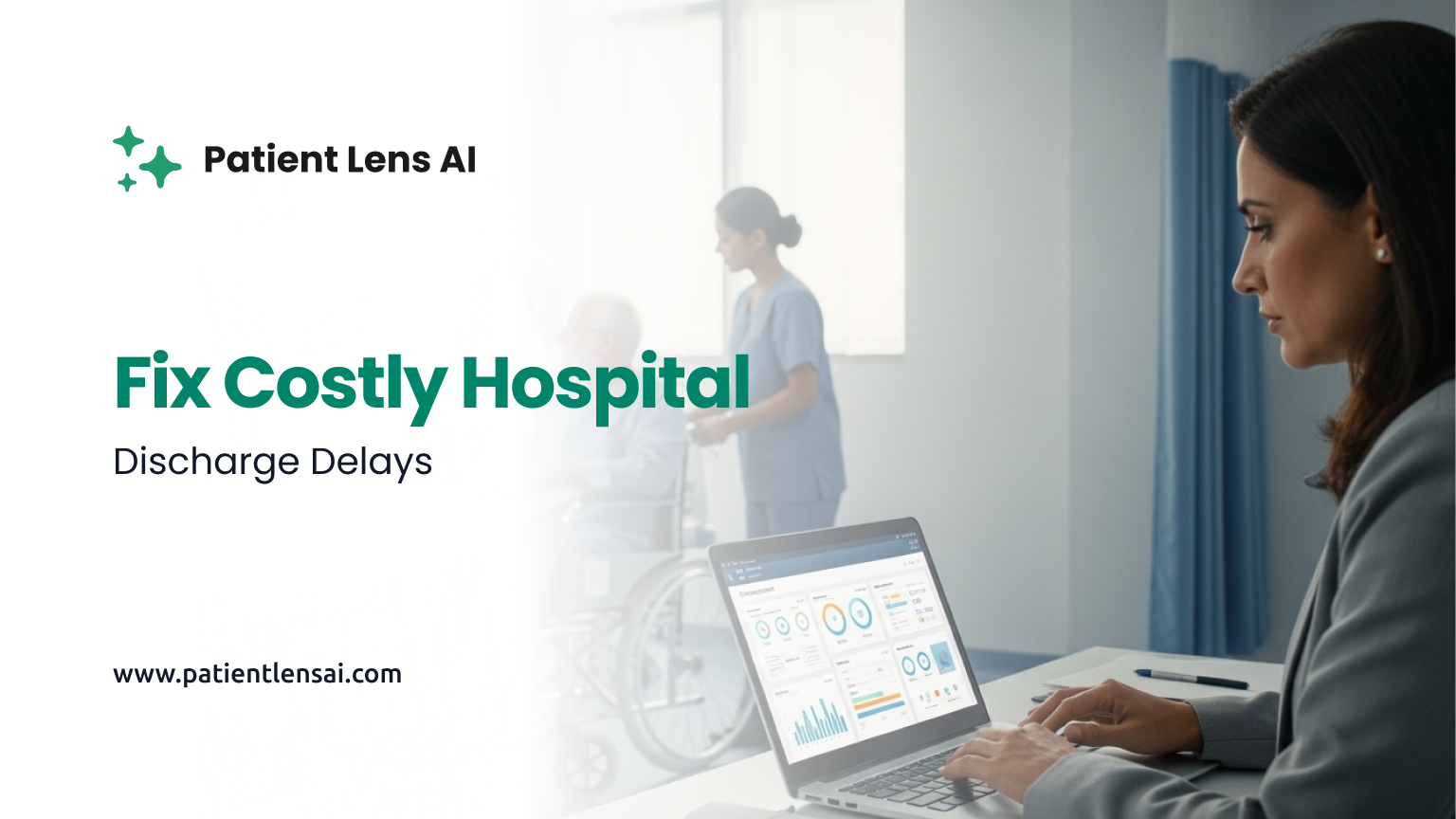Fixing the Hidden Cost of Hospital Discharge Delays
How smarter documentation can unlock revenue, efficiency, and patient trust


Across Indian hospitals, discharge delays are a silent drain on both revenue and reputation. What should be a routine administrative step frequently stretches into a 4–6 hour bottleneck, blocking beds, frustrating patients, and burdening medical staff.
While many hospitals have invested in digital systems for billing and records, few have addressed the manual documentation gap at discharge — the last, but often most painful, step in the inpatient journey.
This article examines the systemic causes of discharge inefficiencies, quantifies their impact on hospital operations, and explores how intelligent automation solutions such as Patient Lens AI are enabling hospitals to reclaim time, capacity, and financial integrity.

Discharge delays are more than an operational inconvenience — they have measurable financial and reputational consequences.
The cascading effects include:
For many hospitals, these inefficiencies translate into lakhs in unrealized revenue every month.

The bottleneck rarely lies in clinical care — it lies in documentation.
A typical discharge involves multiple manual steps:
Each handoff introduces delays, inconsistencies, and compliance risks. In essence, hospitals are managing one of their most financially sensitive workflows through fragmented manual processes.

The cost of slow discharges extends across operational, financial, and experiential dimensions.
In traditional hospital workflows, discharge preparation typically takes between 4 to 6 hours per patient. With AI-automated documentation, this process is reduced to under 15 minutes, freeing up valuable clinical and administrative time.
Manual effort per discharge summary drops from 100% to approximately 30%, as staff are only required for human review and validation rather than full documentation.
Financially, AI-driven accuracy leads to a dramatic reduction in claim rejections caused by documentation errors—from 15–30% in manual workflows to less than 5% with automation.
Operationally, bed utilization improves as faster discharge preparation enables quicker patient turnover, maximizing capacity without additional infrastructure investment.
From an experiential perspective, patient satisfaction rises sharply. What was frequently a frustrating and negative discharge experience becomes significantly smoother and more efficient, reinforcing trust and loyalty toward the healthcare institution.
These improvements do not just increase efficiency — they directly enhance margins, optimize hospital throughput, and strengthen patient trust.

Hospitals can address discharge delays without overhauling their existing HIS or EMR systems. The solution lies in targeted automation focused on documentation.
Patient Lens AI offers a practical example of how this can be achieved:
Rather than replacing legacy systems, this approach enhances existing workflows — making documentation faster, cleaner, and more compliant.

Early adopters of documentation automation are reporting meaningful operational and financial results:
One administrator at a mid-sized private hospital noted:
“Before, discharges stretched for hours. Now, summaries are ready in minutes, and our beds turn over faster — without adding more staff.”

Hospital leaders often focus digital investments on EMR or billing systems, but the discharge process remains one of the least optimized and most consequential.
Automating documentation yields three strategic benefits:
In a margin-sensitive environment, improving discharge efficiency delivers one of the fastest measurable ROIs in healthcare operations.

Documentation automation is only the beginning. The same AI capabilities powering faster discharges today can soon enable:
Hospitals that act now will not only solve today’s bottlenecks but also build a scalable foundation for smarter, data-driven operations.

Hospital discharge delays are not a trivial inconvenience — they are a systemic inefficiency that drains time, revenue, and trust. By embedding AI-powered documentation automation into daily workflows, hospitals can transform discharge processes from a bottleneck into a strategic advantage.
Patient Lens AI demonstrates that the path to better revenue integrity and patient experience doesn’t require replacing systems — only rethinking documentation.
👉 To learn more about how your hospital can cut discharge time by up to 95%, visit www.patientlensai.com.
A writer exploring the intersection of healthcare, technology, and patient care, bringing clarity to complex topics through engaging storytelling.